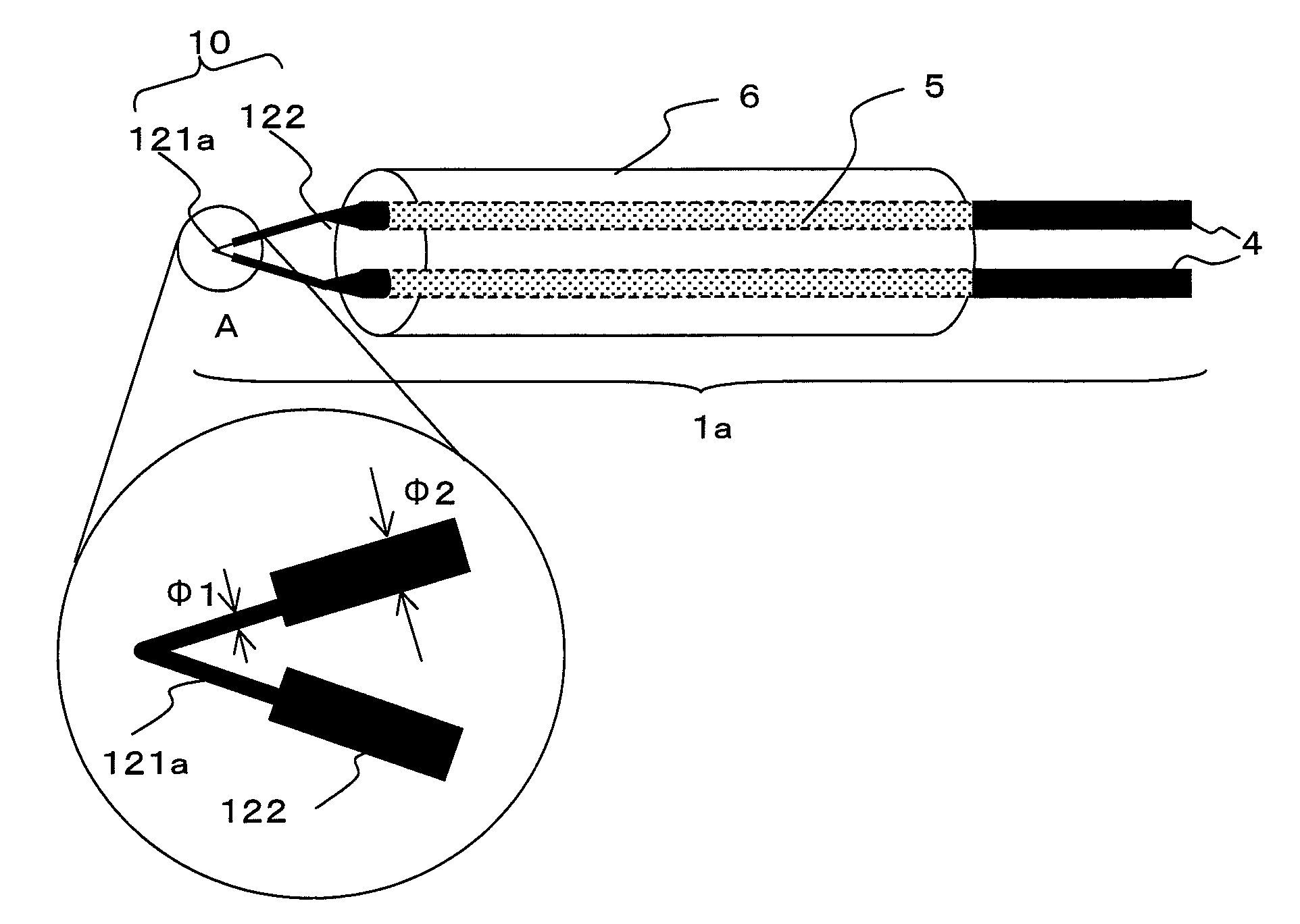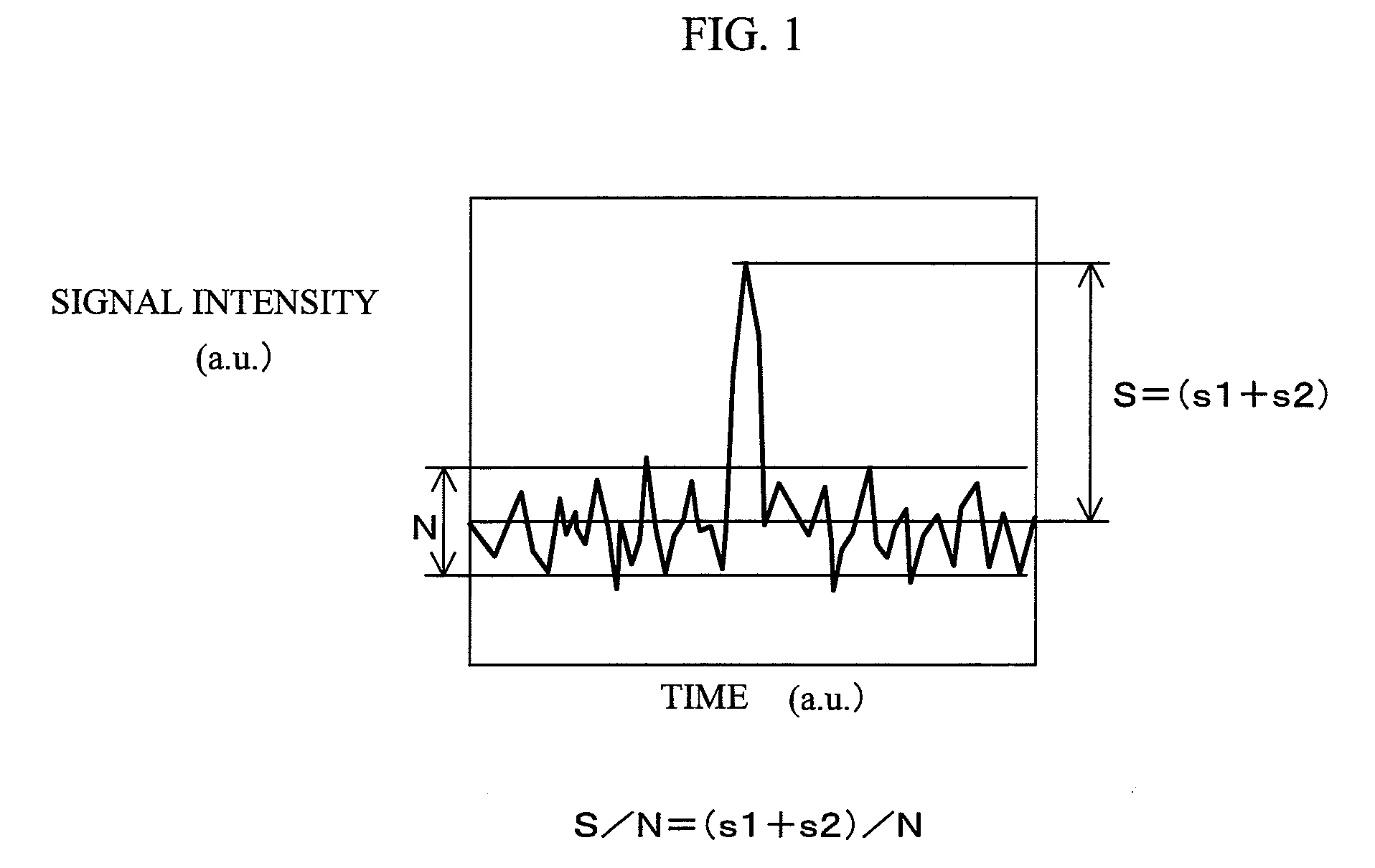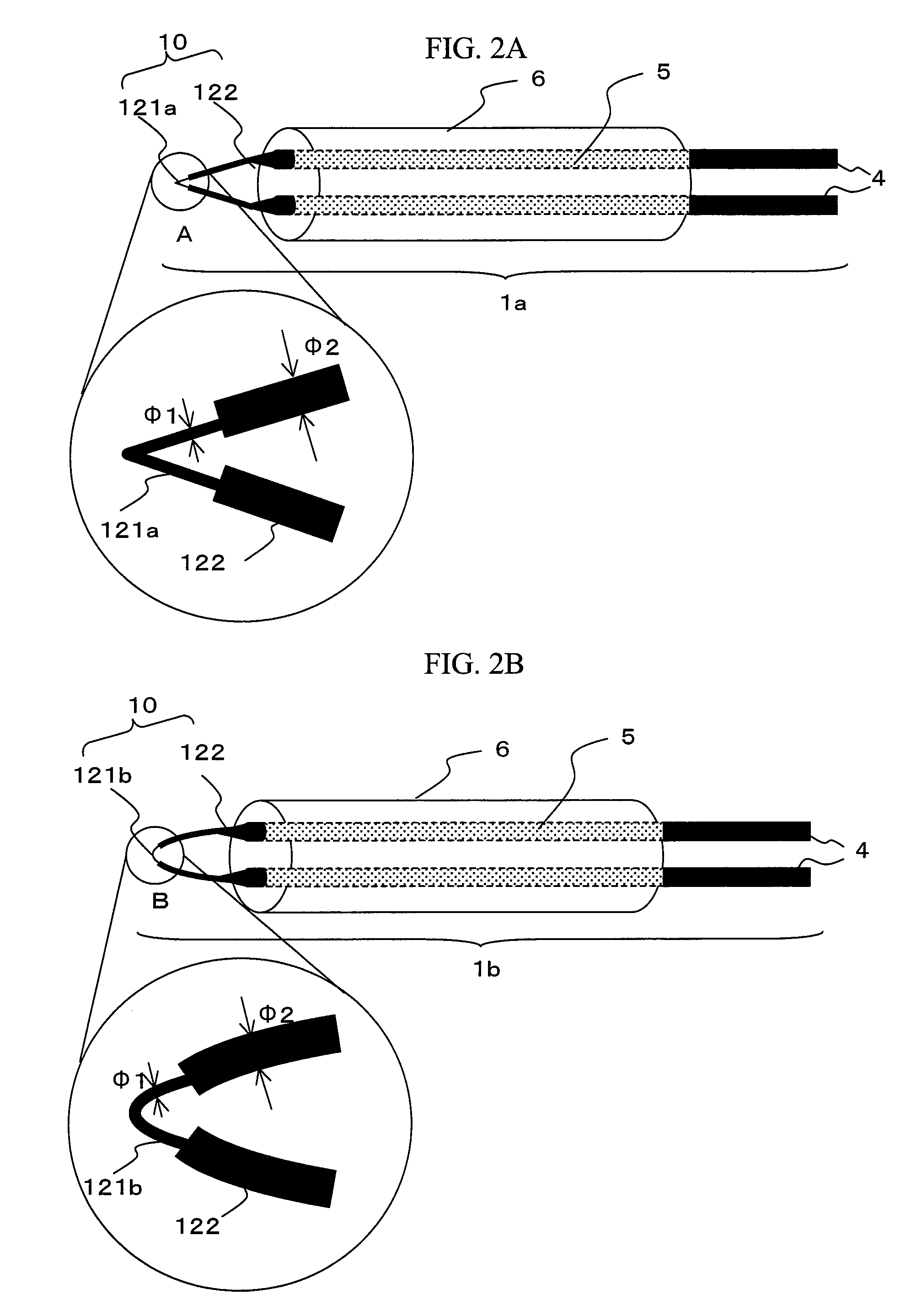Micro Sample Heating Probe and Method of Producing the Same, and Analyzer Using the Micro Sample Heating Probe
a heating probe and micro-sample technology, applied in the direction of particle separator tube details, instruments, separation processes, etc., can solve the problems of deterioration of yield, significant noise to a target signal, and s/n ratio deterioration
- Summary
- Abstract
- Description
- Claims
- Application Information
AI Technical Summary
Benefits of technology
Problems solved by technology
Method used
Image
Examples
first embodiment
[0042]In the first embodiment, an explanation will be made with reference to FIG. 2A and FIG. 2B, as to the probe having a system to heat a sample, by using Joule heat that is generated when energizing a metallic wire.
[0043]FIG. 2A is a schematic illustration of the micro sample heating probe 1a that employs a metallic wire with an acute-angled tip, and FIG. 2B is a schematic illustration of the micro sample heating probe 1b that employs a metallic wire with a circular-arc shaped tip. In the following description, both of the probes above are referred to as the micro sample heating probe 1, unless otherwise distinguished.
[0044]The heated parts 121a and 121b are different only in shape. Therefore, firstly, a common property will be explained, naming these elements generically as “heated part 121”. As for the shape, it will be described later.
[0045]The micro sample heating probe 1 is provided with a sample holder 10 for holding the micro sample, a supporting part 6 for supporting the ...
second embodiment
[0085]Next, there will be explained a method of making the micro sample heating probe 1, having the heated part 121 with the diameter made up of multiple steps, which has been explained in the first embodiment of the present invention.
[0086]As a wire of the heated part 121a of the micro sample heating probe 1a relating to the present embodiment, a wire referred to as “Wollaston wire” is employed, which is made by coating a thin Pt wire with Ag. This wire has a structure that Pt of φ5 μm is embedded into the center of the Ag wire of φ80 μm. The sample holder 10 having the heated part 121a is formed by the use of this wire.
[0087]Firstly, the wire as described above is molded into a shape of the sample holder 10, and it is connected to the probe. Then, only the tip of the sample holder 10, which corresponds to the heated part 121a, is dipped into HNO3 solution. Ag dissolves in HNO3 solution, but Pt does not dissolve therein. Therefore, only Ag coating Pt is removed and Pt is exposed.
[0...
third embodiment
[0093]Next, another method of making the heated part 121 will be explained with reference to the accompanying drawings.
[0094]Firstly, as shown in FIG. 4A, a probe on which a wire is mounted is produced, the wire not being connected at the tip of the sample holder 10.
[0095]Here, it is assumed that the material of the tip wire is Cu, the diameter is 1 mm, and the exposed part of the wire is approximately 10 mm in length.
[0096]Next, as shown in FIG. 4B, Ag paste 50 is applied to the wire tip of φ1 mm.
[0097]Then, as shown in FIG. 4C, a thin wire, which is processed into v-shape in advance for the heated part 121a, is connected to the probe tip via the Ag paste 50.
[0098]The material of the thin wire connected to the probe tip is Pt, and the diameter is set to φ10 μm. It is to be noted here that the length of the heated part 121a is approximately 2 mm.
[0099]Those operations described above can be performed under the stereoscopic microscope with a magnification of around 30 times.
[0100]In ...
PUM
| Property | Measurement | Unit |
|---|---|---|
| surface area | aaaaa | aaaaa |
| volume | aaaaa | aaaaa |
| thickness | aaaaa | aaaaa |
Abstract
Description
Claims
Application Information
 Login to View More
Login to View More - R&D
- Intellectual Property
- Life Sciences
- Materials
- Tech Scout
- Unparalleled Data Quality
- Higher Quality Content
- 60% Fewer Hallucinations
Browse by: Latest US Patents, China's latest patents, Technical Efficacy Thesaurus, Application Domain, Technology Topic, Popular Technical Reports.
© 2025 PatSnap. All rights reserved.Legal|Privacy policy|Modern Slavery Act Transparency Statement|Sitemap|About US| Contact US: help@patsnap.com



